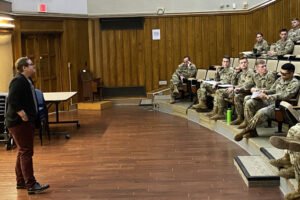
Disinformation Wars: Media Manipulation in the Digital Age
Introduction
The proliferation of digital media has significantly transformed the way information is disseminated and consumed. While this transformation has led to unprecedented access to information, it has also given rise to the phenomenon of disinformation. The term “disinformation” refers to the deliberate spreading of false information to deceive or mislead. This report examines the multifaceted issue of disinformation in the digital age, exploring its impact on democracy, the role of artificial intelligence (AI), and strategies to counteract this pressing challenge.
The Challenge of Disinformation
Disinformation and Democracy
Disinformation poses a severe threat to democratic societies. According to Stamos Archontis and Georgios Terzis in their work published by Cambridge University Press, disinformation undermines public trust in institutions and erodes the foundation of informed citizenry essential for democracy (“Disinformation and Digital Media as a Challenge for Democracy”). The rapid spread of false information can distort public perception and influence political outcomes, thereby compromising the integrity of democratic processes.
The Role of Artificial Intelligence
The advent of AI has both exacerbated and offered solutions to the problem of disinformation. As noted by Graham Lawton in New Scientist, AI technologies can be used to create convincing deepfakes and automate the dissemination of fake news, making it increasingly difficult for individuals to discern truth from falsehood (“Disinformation wars: The fight against fake news in the age of AI”). On the other hand, AI also holds potential for developing sophisticated tools to detect and counteract disinformation.
Strategies to Combat Disinformation
Intellectual Arsenal
Effective countermeasures against disinformation require a robust intellectual arsenal. Archontis emphasizes the importance of education and critical thinking as primary defenses against the spread of false information. By fostering media literacy, individuals can become more adept at recognizing and questioning dubious content.
Technological Solutions
Technological advancements offer promising avenues for addressing disinformation. AI can be leveraged to identify and flag false content more efficiently. For instance, algorithms can be trained to detect patterns associated with disinformation, such as the use of sensational language or the propagation of unverified claims. However, as Lawton points out, the same technologies can be exploited by malign actors, necessitating a nuanced and vigilant approach.
Policy and Regulation
Governmental and institutional policies play a crucial role in mitigating the impact of disinformation. The U.S. Department of State’s report, “Weapons of Mass Distraction: Foreign State-Sponsored Disinformation in the Digital Age,” underscores the effectiveness of regulatory measures in curbing the spread of fake news. These measures include imposing penalties for deliberate dissemination of false information and incentivizing platforms to adopt stringent content moderation policies.
Collaborative Efforts
Combating disinformation requires a collaborative approach involving multiple stakeholders, including governments, tech companies, and civil society. The insights from the U.S. Army’s joint NATO exercise in Albania, as reported by AFCEA, highlight the importance of international cooperation in developing and implementing disinformation countermeasures (“Digital Deceptions: The War Over Truth in the Age of Disinformation”).
Conclusion
The battle against disinformation in the digital age is complex and multifaceted. It demands a combination of educational, technological, regulatory, and collaborative strategies to effectively counteract the spread of false information. As digital media continues to evolve, so too must our approaches to safeguarding the integrity of information and, by extension, the health of democratic societies.
Works Cited
Archontis, Stamos, and Georgios Terzis, editors. “The War against Fake News in the Digital Age and the Weapons in Our Intellectual Arsenal.” Disinformation and Digital Media as a Challenge for Democracy, Cambridge University Press, 26 May 2021, www.cambridge.org/core/books/disinformation-and-digital-media-as-a-challenge-for-democracy/war-against-fake-news-in-the-digital-age-and-the-weapons-in-our-intellectual-arsenal/B85C1236ACA8C52D9865278E11507B79.
Lawton, Graham. “Disinformation wars: The fight against fake news in the age of AI.” New Scientist, 12 Sept. 2023, www.newscientist.com/article/mg25934563-200-disinformation-wars-the-fight-against-fake-news-in-the-age-of-ai/.
“Weapons of Mass Distraction: Foreign State-Sponsored Disinformation in the Digital Age.” U.S. Department of State, May 2019, www.state.gov/wp-content/uploads/2019/05/Weapons-of-Mass-Distraction-Foreign-State-Sponsored-Disinformation-in-the-Digital-Age.pdf.
“Digital Deceptions: The War Over Truth in the Age of Disinformation.” AFCEA, www.afcea.org/signal-media/intelligence/digital-deceptions-war-over-truth-age-disinformation.
“Seven tips for spotting disinformation on the Russia-Ukraine war.” Stanford News, 13 Apr. 2022, news.stanford.edu/2022/04/13/know-disinformation-address.











+ There are no comments
Add yours